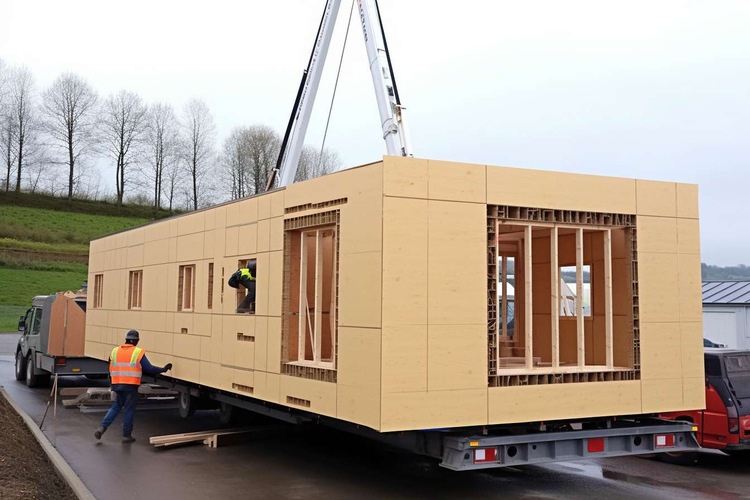The Essential Guide to Installing Your Glamping Pod
Installing a glamping pod on your property can transform unused outdoor space into a profitable accommodation venture or personal retreat. These prefabricated structures combine the comfort of traditional lodging with the immersive experience of outdoor living. Understanding the installation process, costs, and considerations is crucial for making informed decisions about this growing hospitality trend that appeals to travelers seeking unique experiences in natural settings.

The Essential Guide to Installing Your Glamping Pod
Glamping pods represent a significant investment in outdoor hospitality infrastructure that requires careful planning and execution. The installation process involves multiple phases, from site preparation to final inspections, each demanding specific expertise and attention to detail. Property owners considering this venture must navigate building regulations, utility connections, and environmental considerations while ensuring the final product meets both safety standards and guest expectations.
What Are Glamping Pods
Glamping pods are self-contained accommodation units designed to provide comfortable lodging in outdoor settings. These structures typically feature insulated walls, proper ventilation systems, and basic amenities that distinguish them from traditional camping options. Most pods incorporate sustainable materials and energy-efficient designs to minimize environmental impact while maximizing guest comfort. The units range from basic sleeping quarters to fully equipped mini-homes with kitchenettes, private bathrooms, and climate control systems.
Glamping Pod Types
Several distinct categories of glamping pods cater to different market segments and installation requirements. Barrel-shaped pods offer excellent structural integrity and weather resistance, making them popular for year-round operations. Geodesic dome pods provide spacious interiors with unique architectural appeal but require specialized installation techniques. Traditional cabin-style pods blend seamlessly with natural surroundings while offering familiar aesthetics to guests. Safari tent pods combine canvas exteriors with solid flooring systems, creating hybrid structures that balance authenticity with comfort.
Glamping Pod Overall Costs
The financial investment for installing glamping pods varies significantly based on size, features, and site conditions. Basic pods without utilities typically range from $15,000 to $35,000 per unit, while luxury models with full amenities can exceed $80,000. Site preparation costs add $5,000 to $20,000 depending on terrain complexity and utility access requirements. Installation labor, permits, and inspections contribute additional expenses of $3,000 to $10,000 per pod.
| Pod Type | Provider | Cost Estimation |
|---|---|---|
| Basic Barrel Pod | EcoPod Ventures | $18,000 - $25,000 |
| Luxury Dome Pod | Geodesic Glamping Co | $45,000 - $65,000 |
| Safari Tent Pod | Canvas & Timber | $22,000 - $35,000 |
| Cabin-Style Pod | Rustic Retreats | $28,000 - $50,000 |
Prices, rates, or cost estimates mentioned in this article are based on the latest available information but may change over time. Independent research is advised before making financial decisions.
Installing Your Glamping Pod Process
The installation timeline typically spans 4 to 8 weeks from site preparation to final occupancy approval. Initial site assessment determines foundation requirements, utility routing, and environmental impact considerations. Ground preparation involves leveling, drainage installation, and foundation construction using concrete pads or pier systems. Utility connections for electricity, water, and sewage require professional installation and inspection before pod placement. Final positioning uses specialized equipment to ensure proper alignment and structural stability.
Pros and Cons of Installing A Glamping Pod
Advantages of glamping pod installation include relatively quick deployment compared to traditional construction, lower environmental impact, and flexibility for seasonal operations. The structures typically require minimal ongoing maintenance and can generate substantial rental income in popular destinations. However, challenges include initial capital requirements, zoning restrictions in some areas, and seasonal demand fluctuations that affect profitability. Weather exposure and limited customization options compared to permanent structures represent additional considerations for potential investors.
Successful glamping pod installation requires thorough research, professional guidance, and realistic financial planning. The growing popularity of unique accommodation experiences suggests strong market potential for well-executed projects. Property owners who carefully evaluate site conditions, local regulations, and target markets can create profitable ventures that serve the expanding glamping industry while providing memorable experiences for guests seeking alternatives to traditional lodging options.




